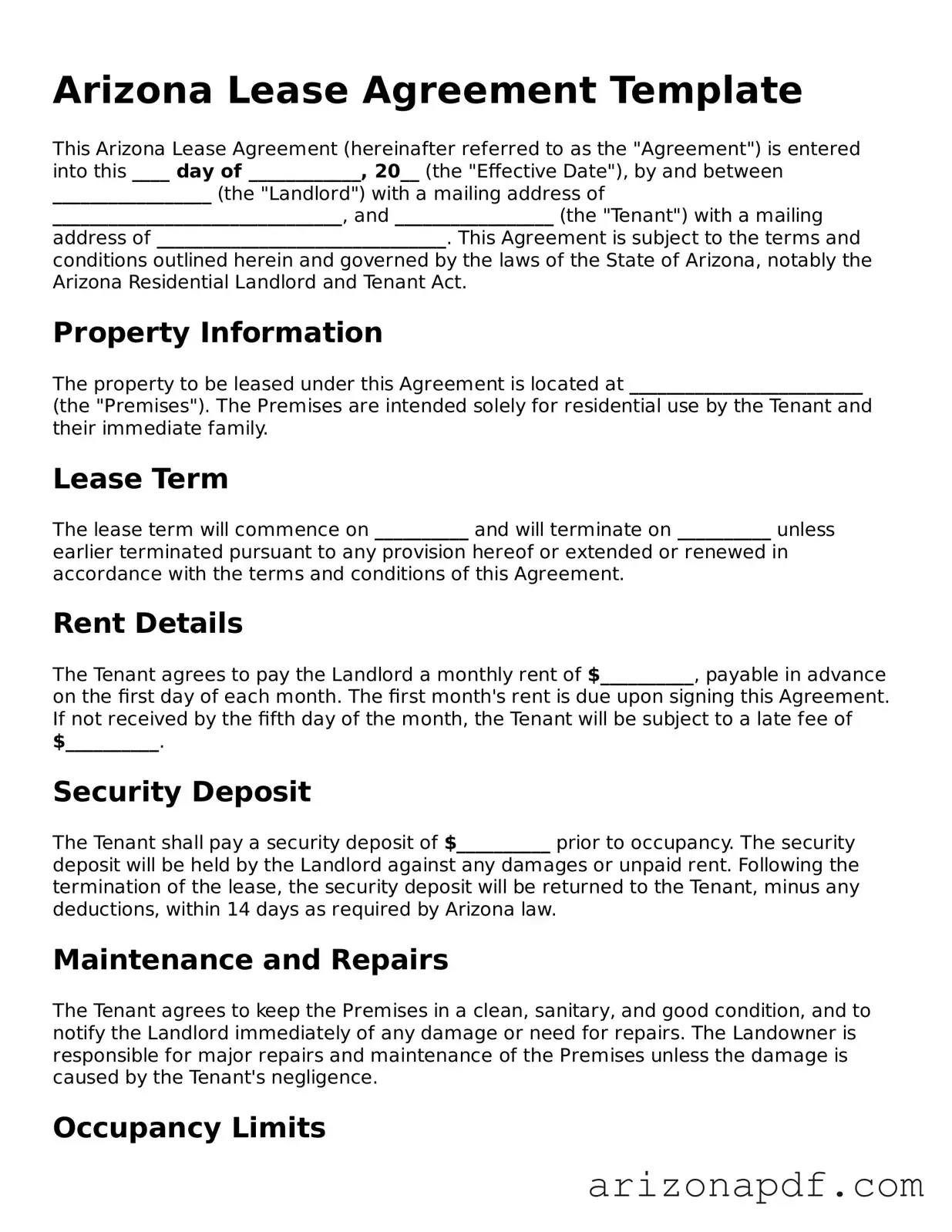Arizona Lease Agreement Template
This Arizona Lease Agreement (hereinafter referred to as the "Agreement") is entered into this ____ day of ____________, 20__ (the "Effective Date"), by and between _________________ (the "Landlord") with a mailing address of _______________________________, and _________________ (the "Tenant") with a mailing address of _______________________________. This Agreement is subject to the terms and conditions outlined herein and governed by the laws of the State of Arizona, notably the Arizona Residential Landlord and Tenant Act.
Property Information
The property to be leased under this Agreement is located at _________________________ (the "Premises"). The Premises are intended solely for residential use by the Tenant and their immediate family.
Lease Term
The lease term will commence on __________ and will terminate on __________ unless earlier terminated pursuant to any provision hereof or extended or renewed in accordance with the terms and conditions of this Agreement.
Rent Details
The Tenant agrees to pay the Landlord a monthly rent of $__________, payable in advance on the first day of each month. The first month's rent is due upon signing this Agreement. If not received by the fifth day of the month, the Tenant will be subject to a late fee of $__________.
Security Deposit
The Tenant shall pay a security deposit of $__________ prior to occupancy. The security deposit will be held by the Landlord against any damages or unpaid rent. Following the termination of the lease, the security deposit will be returned to the Tenant, minus any deductions, within 14 days as required by Arizona law.
Maintenance and Repairs
The Tenant agrees to keep the Premises in a clean, sanitary, and good condition, and to notify the Landlord immediately of any damage or need for repairs. The Landowner is responsible for major repairs and maintenance of the Premises unless the damage is caused by the Tenant's negligence.
Occupancy Limits
The Premises shall not be occupied by more than ____ persons without the prior written consent of the Landlord.
Utilities
Unless otherwise agreed, the Tenant is responsible for the payment of all utilities, including but not limited to electricity, water, gas, telephone, and internet services.
Pet Policy
Pets are [allowed/not allowed] on the Premises. If allowed, the Tenant agrees to pay a non-refundable pet deposit of $__________.
Termination
This Agreement may be terminated by either party by providing __________ days written notice to the other party. The Tenant remains responsible for the payment of rent through the termination effective date.
Governing Law
This Agreement shall be governed, construed, and interpreted by, through, and under the laws of the State of Arizona.
Signatures
IN WITNESS WHEREOF, the parties hereto have executed this Arizona Lease Agreement as of the Effective Date first above written.
Landlord Signature: _________________ Date: __________
Tenant Signature: _________________ Date: __________
